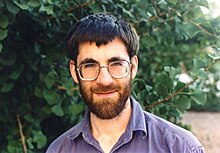
Richard Durbin at International Maths Olympiad

While going through a number of papers (SGA, Fermi, BWA), a Google search took us to
Richard M. Durbin’s wiki page. We got curious after seeing the Math’s Olympiad reference there and checked the 1978 IMO page. Indeed Durbin was there with a silver and a bronze medal.
For those with spare time in hand, here is a problem from the 1978 Olympiad -
An international society has its members from six different countries. The list of members contains 1978 names, numbered 1; 2; :::; 1978: Prove that there is at least one member whose number is the sum of the numbers of two members from his own country, or twice as large as the number of one member from his own country.
Every year, the Maths Olympiad committee works very hard to find one good problem that has the number of the IMO year in it.
1979/1. Let p and q be natural numbers such that
p/q= 1 -1/2 + 1/3-1/4+…………-1/1318+1/1319
Prove that p is divisible by 1979.
In our year, that turned out to be an embarrassment for the mathematician who selected the problem, because he picked it from his own papers and thought the problem would be very difficult. Instead, every kid (except me uneducated in numbers theory) solved it through very straightforward application of Chinese Remainder theorem, and was puzzled why the problem was in IMO.
-———————————-
What happened to those at the top of the pack at IMO in Durbin’s year? We googled the top guy (Mark Kleiman) and could not find him anywhere. That was rather odd ! The second guy (Richard Ewen Borcherds) received a Field medal. A number of others became professors of computer science.

-————————————-
We follow the Maths Olympiad trends very diligently, and Ron Unz’s observation about ‘US Meritocracy’ did not surprise us.
This evidence of a massively disproportionate Asian presence among top- performing students only increases if we examine the winners of national academic competitions, especially those in mathematics and science, where judging is the most objective. Each year, America picks its five strongest students to represent our country in the International Math Olympiad, and during the three decades since 1980, some 34 percent of these team members have been Asian-American, with the corresponding figure for the International Computing Olympiad being 27 percent. The Intel Science Talent Search, begun in 1942 under the auspices of the Westinghouse Corporation, is Americas most prestigious high school science competition, and since 1980 some 32 percent of the 1320 finalists have been of Asian ancestry (see Appendix F).
Given that Asians accounted for just 1.5 percent of the population in 1980 and often lived in relatively impoverished immigrant families, the longer-term historical trends are even more striking. Asians were less than 10 percent of U.S. Math Olympiad winners during the 1980s, but rose to a striking 58 percent of the total during the last thirteen years 20002012. For the Computing Olympiad, Asian winners averaged about 20 percent of the total during most of the 1990s and 2000s, but grew to 50 percent during 20092010 and a remarkable 75 percent during 20112012.
Rest of his article is well worth reading.
-—————————————
Speaking of Durbin, we were very impressed interacting with a number of his students (Heng Li, Jared Simpson).